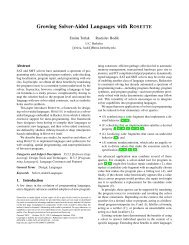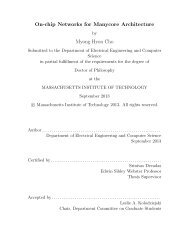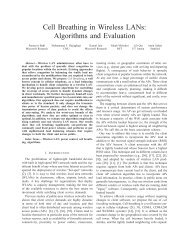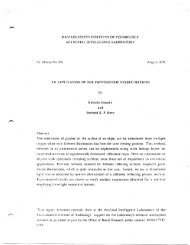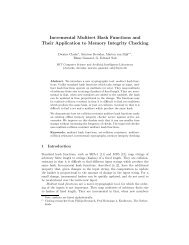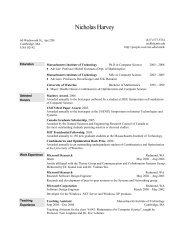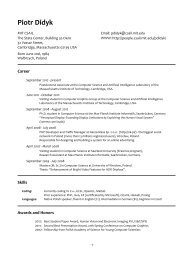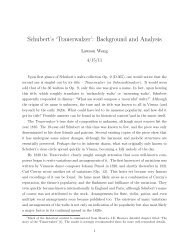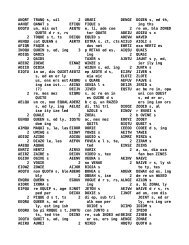Prism User's Guide - CSAIL People - MIT
Prism User's Guide - CSAIL People - MIT
Prism User's Guide - CSAIL People - MIT
Create successful ePaper yourself
Turn your PDF publications into a flip-book with our unique Google optimized e-Paper software.
T,<br />
t<br />
)<br />
Chapter 4. Debugging a Program 67<br />
~~*·~~~~R<br />
"- ~ -" · .".... , .. ,~<br />
Deleting Traces via the Event Table<br />
To delete a trace, choose the Delete selection from the Events menu, or use the<br />
Delete button in the event table itself. See Section 4.2.3.<br />
4.4.2 Using Commands<br />
Issue the trace command from the command line to trace program execution.<br />
Issuing trace with no arguments causes each source line in the program to be<br />
displayed in the command window before it is executed.<br />
The trace command uses the same syntax as the stop command; see Section<br />
4.3.3. For example,<br />
trace print a)<br />
traces and prints a on every source line.<br />
trace at 17 if a .GT. 10<br />
traces line 17 if a is greater than 10.<br />
In addition, <strong>Prism</strong> interprets<br />
trace line-number<br />
as being the same as<br />
trace at line-number<br />
For Machine Instructions<br />
To trace machine instructions, use the tracei command, specifying a machine<br />
address. When tracing machine instructions, <strong>Prism</strong> follows all procedure calls<br />
down. The tracei command has the same syntax as the stop command; see<br />
Section 4.3.3.<br />
The history region displays the address and the machine instruction. The execution<br />
pointer moves to the next source line to be executed.<br />
Version 1.2, March 1993<br />
Copyright © 1993 Thinking Machines Corporation



